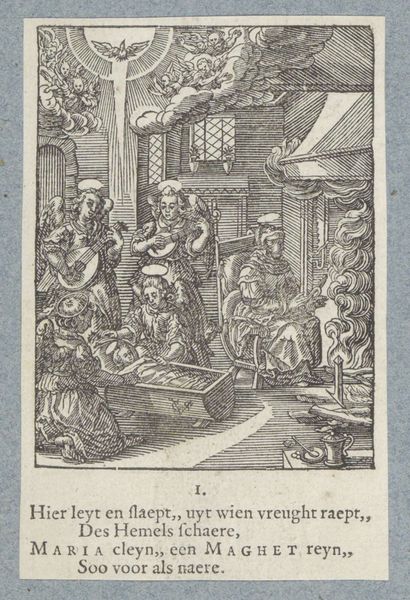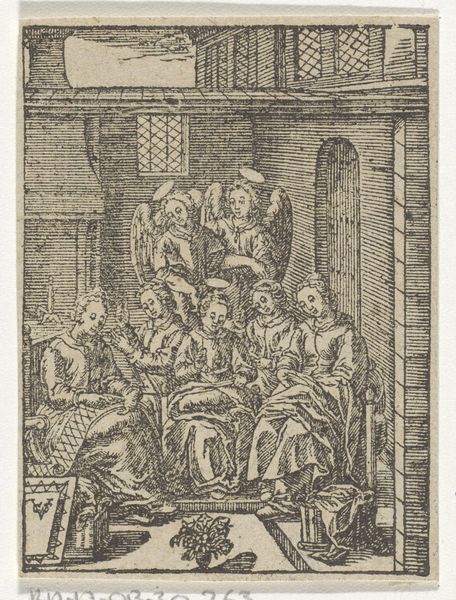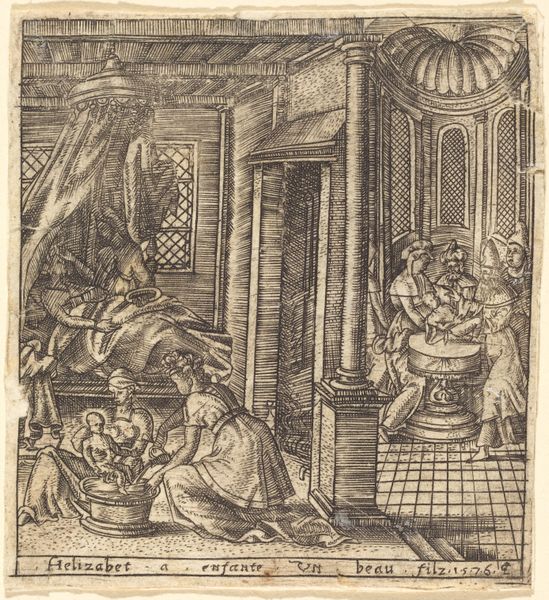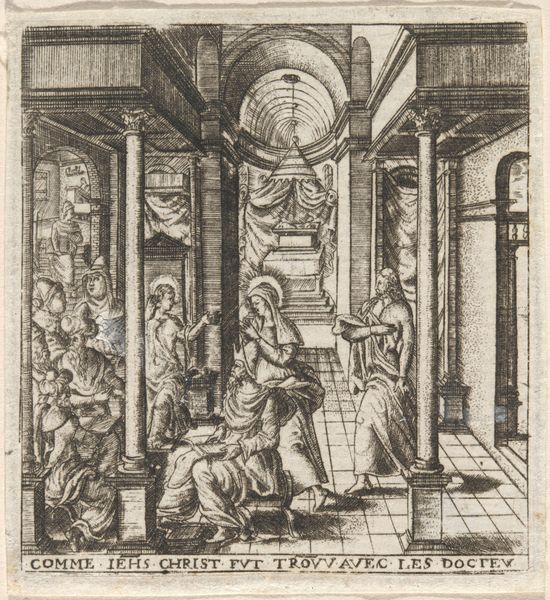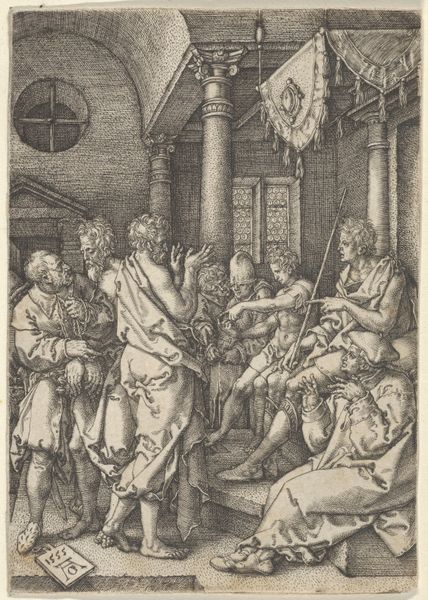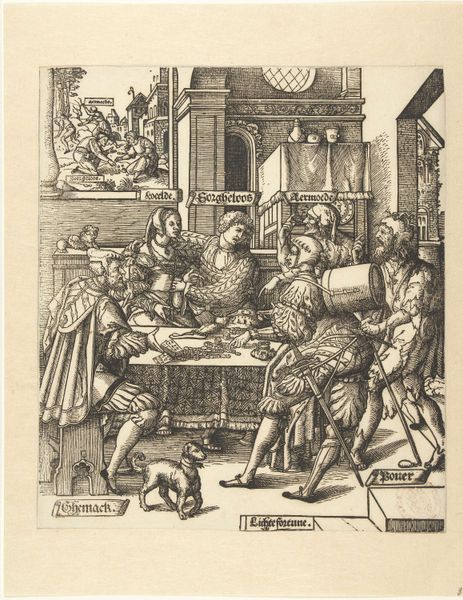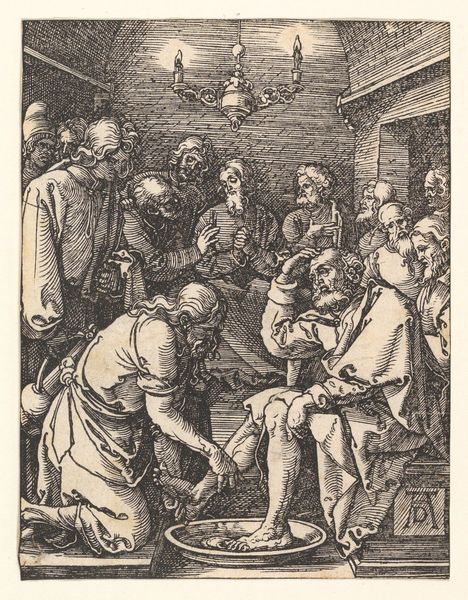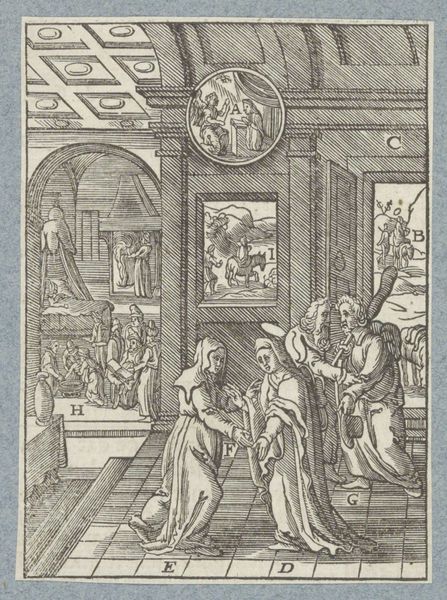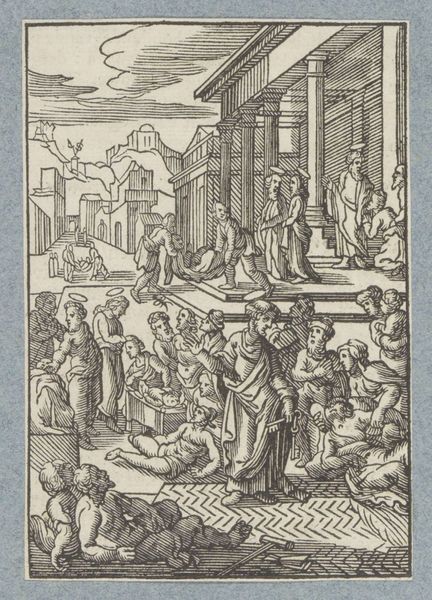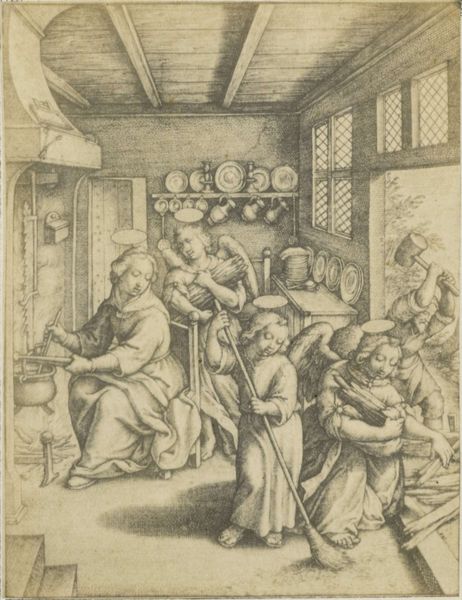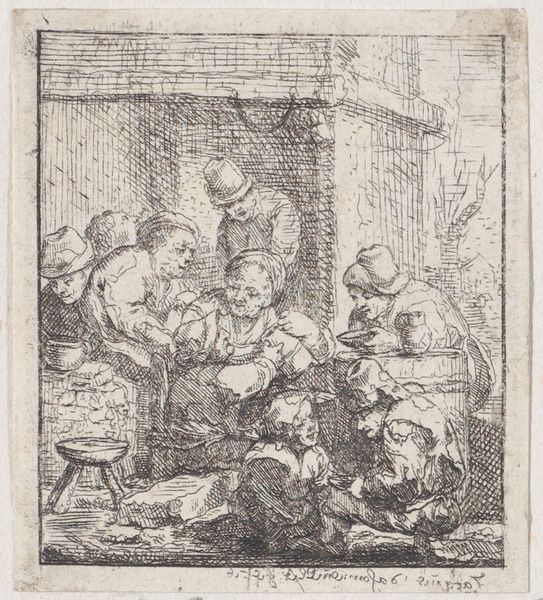
drawing, print, engraving
#
drawing
#
medieval
#
pen drawing
#
mechanical pen drawing
# print
#
pen illustration
#
pen sketch
#
old engraving style
#
personal sketchbook
#
pen-ink sketch
#
pen work
#
sketchbook drawing
#
storyboard and sketchbook work
#
engraving
Dimensions: height 83 mm, width 67 mm
Copyright: Rijks Museum: Open Domain
Curator: This detailed engraving, held at the Rijksmuseum, is titled "Christuskind veegt de vloer" or "Christ Child Sweeping the Floor." It's attributed to Christoffel van Sichem II and was likely created sometime between 1617 and 1658. What catches your eye? Editor: It feels surprisingly domestic, even humble. There's Christ, usually portrayed in majesty, caught up in a household chore. The scale of the composition seems small, giving it an intimate quality despite the obviously staged scene. Curator: Exactly. The image participates in a tradition of showing the Holy Family engaged in everyday activities. While it highlights Christ’s humility, we must recognize the context of printmaking. These engravings were widely disseminated and accessible, influencing the public's understanding of religious narratives. The cleaning itself becomes symbolic, evoking the cleansing of souls, an idea visually present in domestic virtue. Editor: I see that continuity echoed in the presence of halos throughout the scene. Everyone is radiant, yet fully occupied with their tasks, even mundane work like sweeping. The halo isn’t reserved for the traditionally “holy moments”, but permeates daily life. It challenges the boundaries of when the sacred is considered active. Curator: That domestic portrayal was critical in promoting specific social and moral codes. Placing Christ within a typical home elevated these daily routines. Look at the distribution of labor depicted: Mary weaves while other figures, presumably angels, also engage in labour, reflecting the gender roles expected within early modern households and a very precise moral standard to instill. Editor: The presence of labor itself adds a new layer. It elevates physical work to something imbued with divine significance, a far cry from aristocratic detachment. It gives sacred value to a working household. It is an ideological statement as much as a religious one. The array of pots hung against the walls indicates abundance as well, providing comfort, even if humble. Curator: And yet, it’s also about power and obedience, promoting social stability. The engraving participates in that broader visual culture by teaching ordinary folk on how to serve their church and household, even through seemingly menial work. This also explains the medieval undertones that appear in the execution. Editor: Precisely, so the child doesn’t simply sweep but serves as a continuous model, connecting labor to religious life, both literally and ideologically in the imagery. These humble acts carry symbolic weight, demonstrating the divine within everyday existence, shaping cultural memory around core ideals of diligence, order and devotion.
Comments
No comments
Be the first to comment and join the conversation on the ultimate creative platform.
